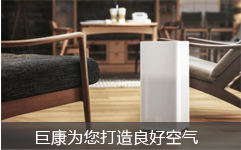不同洁净度等级的洁净区的划分原则
- 发布人:
- 发布日期:2017-04-13 17:50:00

在确定洁净区划分原则时,首先需要确定保护对象
In determining the principle of division of the clean area, the first need to determine the protection object
1) 保护生产过程(产品)不受人员和环境污染;
1) to protect the production process (product) without the personnel and environmental pollution;
2) 保护人员(环境)不受生产过程污染;
2) the protection of persons (environment) is not subject to the process of production;
3) 防止生产过程与人员(环境)相互污染,即要综合防护,1)和2)两项同时要采用。
3) to prevent the production process and personnel (environment) mutual pollution, namely to comprehensive protection, 1) and two, while the use of.
如果要求采用隔离(屏障)工艺,即必须采用物理屏障密闭局部洁净区,这样就需要隔离:
If the requirements of the use of isolation (barrier) process, that is, the physical barrier must be confined to the clean area, which requires isolation:
1. 使生产过程与周围环境(人员)隔离;
1 to isolate the production process and the environment (personnel);
2. 使环境、人员与生产过程隔离;
2 isolate the environment, personnel and production process;
洁净室技术被广泛应用于保护生产过程(产品),不受人员和环境污染。为此需遵循下列三项原则之一:
Clean room technology is widely used in the protection of the production process (product), not the personnel and environmental pollution. One of the following three principles should be followed:
1.使洁净室保持比邻近房间更高的气压;
Make clean room maintain pressure of 1 neighboring room more;
2.在洁净区与较不洁净区的分界处应保持较高的排风风速;
2 in the clean area and the relatively clean area of the boundary should be maintained at a high speed of the wind;
3.采用物理隔离的方式隔离不同的区域。
3 separate different regions by means of physical isolation.
压差原则就是防止较不洁净区的气流向洁净区倒灌(例如通过门缝),即在洁净室内保持恒定的高压(5~20Pa)。其气流组织原则是低速气流由洁净室向着邻近区域并保持相对高的压差。受控参数就是压差。
Pressure difference principle is to prevent the air is not clean area to the clean area intrusion (for example through the crack of the door), namely in the clean room maintain a constant pressure (5 ~ 20). The principle of the air flow organization is that the low velocity air flow is from the clean room to the adjacent area and remains relatively high. Controlled parameter is differential pressure.
排风原则就是形成低涡流或近似于单向气流,风速大于0.2米/秒,由较洁净区吹向较不洁净区,以防止气流倒灌。
Exhaust principle is the formation of vortex flow or similar to the unidirectional air flow velocity is greater than 0.2 M / sec, by the relatively clean area blow to a clean area to prevent Backdraught airflow.
在应用此种方式时,应考虑到障碍物,热源和污染物,排风格栅位置等的影响。此项原则的特点就是低压差,相对高的气流风速。运用此项原则的实例就是位于较低洁净度级别房间内的层流洁净区(单向气流区)。
In the application of this method, the influence of the obstacle, heat source and pollutant, and the position of the wind grid should be considered. This principle is characterized by low pressure, relatively high airflow speed. Examples of the use of this principle is at a relatively low level of cleanliness in the room clean area (one-way flow area).
区域的物理分隔原则就是建立隔离装置,对由较低洁净度的房间产生的污染形成不可逾越的屏障,不致进入较高洁净度的洁净室。
Area of physical separation principle is to establish isolation device, impassable for the formation of the pollution produced by the low cleanliness of the room the barrier, not into a high cleanliness of clean room.
如果是具有有害物的生产过程(个别品种的致病微生物,强烈反应的化学制剂),则应保证该处的气压相对于环境是负压。
If there is a production process (individual species of pathogenic microorganisms, the strong reaction of the chemical agents), then should ensure that the pressure in the area is negative pressure.
应予指出,建立负压的要求是与洁净室的工作原理相矛盾的,洁净室是基于正压差的。为了解决此项矛盾,便采用了另加的气闸室,在洁净室周围建立第二层密闭外壳(包括吊顶)使气闸室相对于邻近房间和有害作业具有高的正压。
It should be pointed out that the requirement to establish negative pressure is in contradiction with the working principle of the clean room, clean room is based on the positive pressure difference. In order to solve this contradiction, adopt the plus the airlock, in clean room around the establishment of the second layer of the closed shell (including ceiling) the airlock relative to adjacent rooms and hazardous operation has high positive pressure.
为此,就可以采用隔离工艺,例如,在接触有毒制剂时采用具有负压得隔离装置。
To this end, the separation process can be used, for example, the use of a negative pressure isolation device when exposed to toxic agents.
- 上一篇:杜绝洁净厂房设计施工产生污染问题
- 下一篇:防止空气净化工程微粒子污染的四项基本原则









